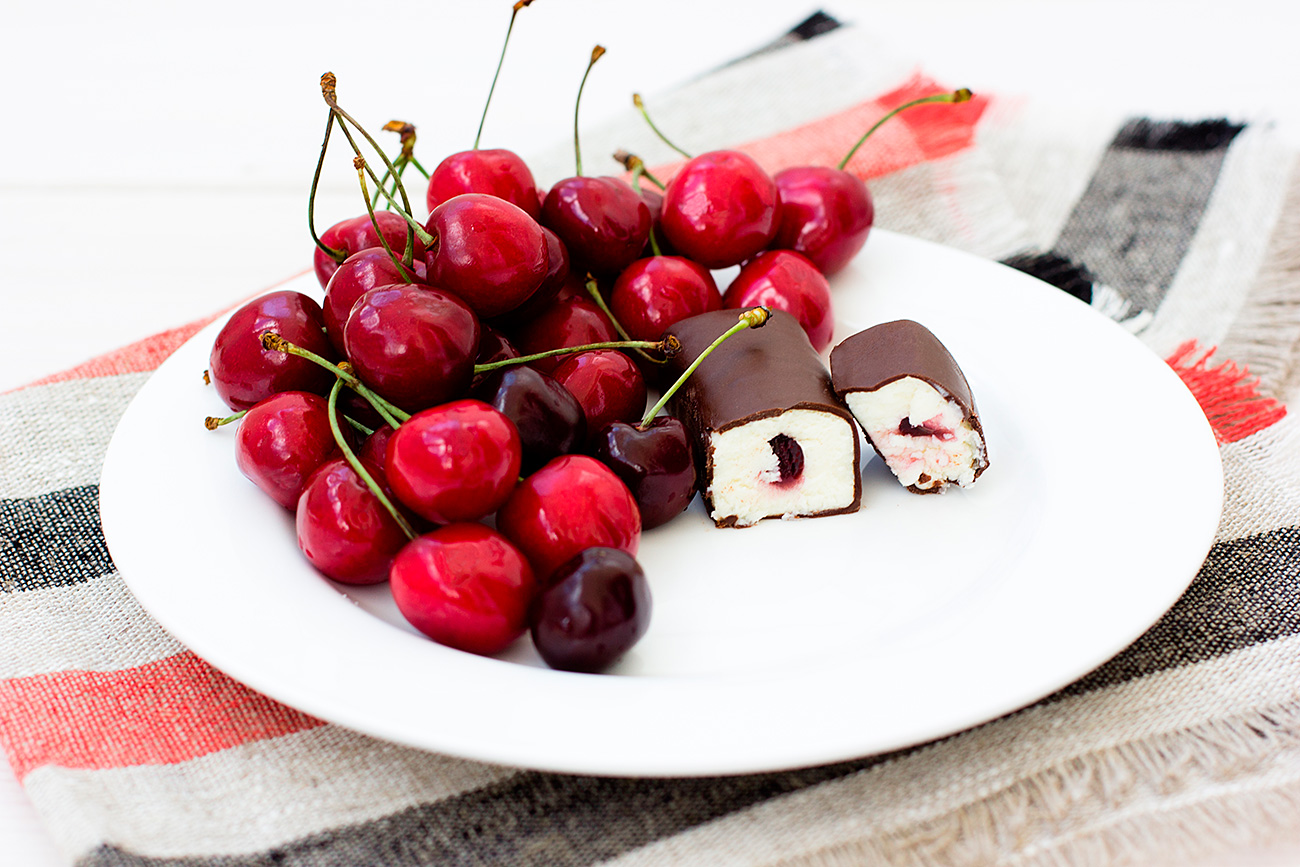
Created for practical purposes, this dessert is an international favorite.
Legion MediaTraditionally made from cottage cheese, sugar, butter and vanilla, these bites, (or mini-bars), make a delicious, healthy dessert that is rich in proteins and carbohydrates. They are filling, and the cottage cheese proteins are more easily digested than milk proteins.
Chocolate-glazed cottage cheese bites appeared in Russia in the 1950s, but there’s a legend that they were common in Siberia’s Altai region at the end of the 19th century. Their immediate popularity was not surprising, and sometimes children made two delights from one - biting the chocolate glaze on the outside, and then eating the cottage cheese mass. Some parents even pretended those mini-bars were Eskimo pie ice creams during the time of food shortages in the Soviet Union. They were even included in the official school lunch menu.
Strangely enough, the cottage cheese bites were created as an experment by Soviet food technicians to coax Soviet children to eat wholesome desserts. Even foreign specialists were impressed by how delicious they were, and in the end of the 1960s the chocolate-glazed cottage cheese mini-bars appeared in many countries, from Europe to New Zealand!During the economic troubles in the late Soviet period at the end of the 1980s, the mini-bars disappeared from shelves. But when the economy recovered after 1995, the range of varieties broadened greatly. These included many different fillings, as well as with waffles and cookies.
2. Make bars (or pellets, if you like) from the mass, and put into freezer for 15 minutes. Be careful: it should cool, but not be completely frozen.
4. Take the mini-bars out of the freezer and dunk into the glaze. Place on butter paper or foil, and put into the fridge until the chocolate is hard.
You can also melt the chocolate mini-bar with or without butter to make the glaze. For greater variety, the cottage cheese mass can be filled with various ingredients: vanilla, cocoa, chip coconut, nuts, cherry or caramelized milk.
If using any of Russia Beyond's content, partly or in full, always provide an active hyperlink to the original material.
Subscribe
to our newsletter!
Get the week's best stories straight to your inbox